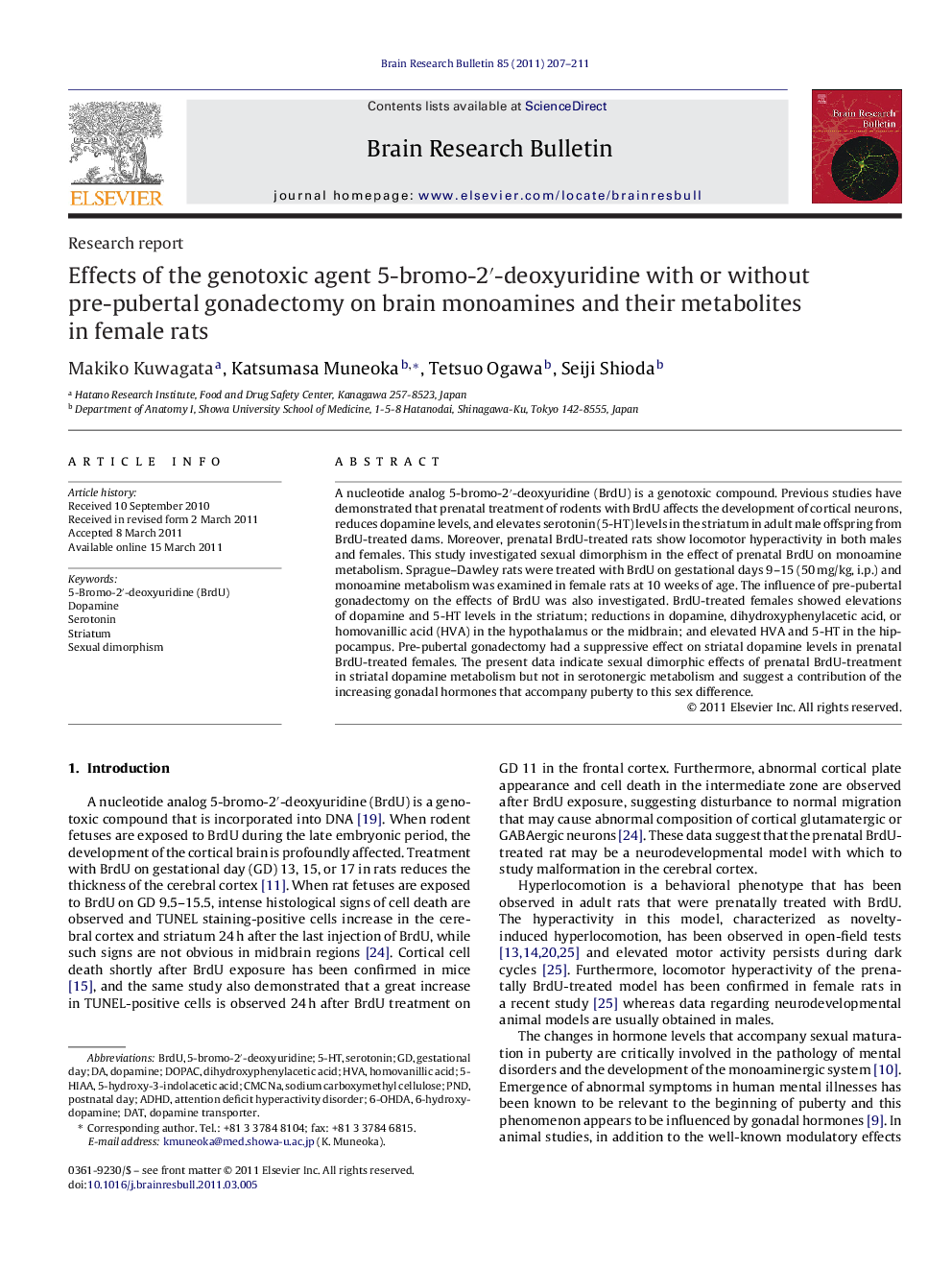| Article ID | Journal | Published Year | Pages | File Type |
|---|---|---|---|---|
| 4319255 | Brain Research Bulletin | 2011 | 5 Pages |
A nucleotide analog 5-bromo-2′-deoxyuridine (BrdU) is a genotoxic compound. Previous studies have demonstrated that prenatal treatment of rodents with BrdU affects the development of cortical neurons, reduces dopamine levels, and elevates serotonin (5-HT) levels in the striatum in adult male offspring from BrdU-treated dams. Moreover, prenatal BrdU-treated rats show locomotor hyperactivity in both males and females. This study investigated sexual dimorphism in the effect of prenatal BrdU on monoamine metabolism. Sprague–Dawley rats were treated with BrdU on gestational days 9–15 (50 mg/kg, i.p.) and monoamine metabolism was examined in female rats at 10 weeks of age. The influence of pre-pubertal gonadectomy on the effects of BrdU was also investigated. BrdU-treated females showed elevations of dopamine and 5-HT levels in the striatum; reductions in dopamine, dihydroxyphenylacetic acid, or homovanillic acid (HVA) in the hypothalamus or the midbrain; and elevated HVA and 5-HT in the hippocampus. Pre-pubertal gonadectomy had a suppressive effect on striatal dopamine levels in prenatal BrdU-treated females. The present data indicate sexual dimorphic effects of prenatal BrdU-treatment in striatal dopamine metabolism but not in serotonergic metabolism and suggest a contribution of the increasing gonadal hormones that accompany puberty to this sex difference.
► 5-Bromo-2′-deoxyuridine 5-bromo-2′-deoxyuridine (BudU) is a genotoxic compound that affects neurogenesis and cellular differentiation. ► Development of dopaminergic and serotoninergic systems is affected by BrdU exposure during prenatal period. ► The prenatal BrdU appears to influence dopamine metabolism in the striatum in a sexual dimorphic manner, while BrdU affects serotonin metabolism similarly in males and females. ► The prenatally BrdU exposed animal is an interesting model to address sexual dimorphism in genotoxic effects, especially on the striatal dopamine system.
